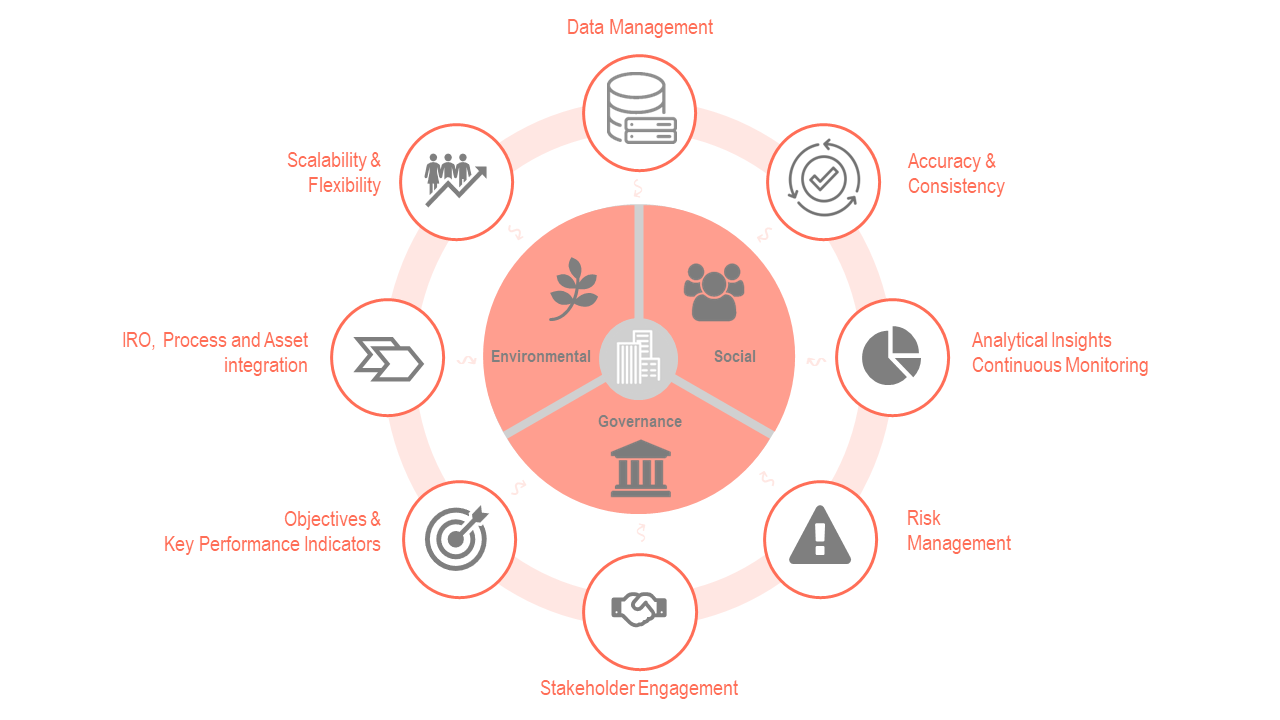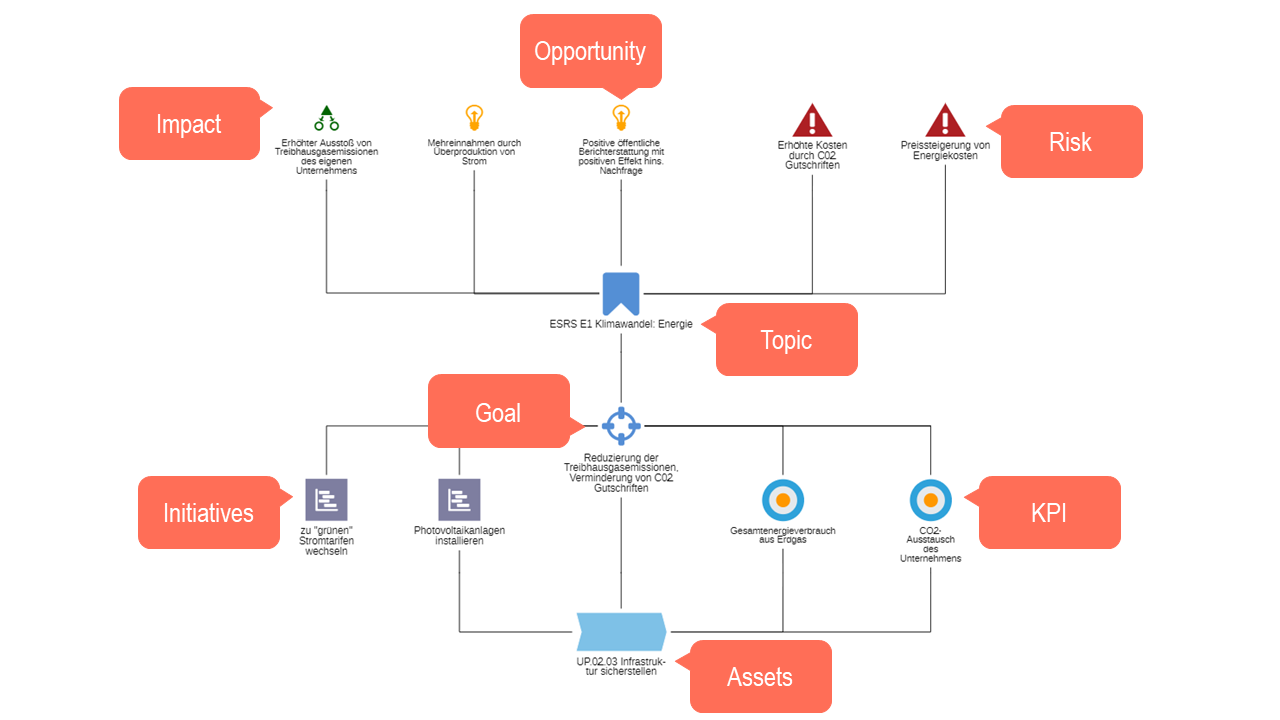Introduction
Implementing an ESG tool provides numerous benefits for businesses by streamlining data management, ensuring accuracy, and enhancing analytical capabilities. These tools help organizations mitigate risks, comply with regulations, and improve stakeholder engagement, ultimately contributing to more effective sustainability strategies. Discover how leveraging ESG software can drive value in managing environmental, social, and governance goals.
What are ESG Tools?
Before diving into the benefits and selection process of the right ESG tool for your organization, it is essential to establish a common understanding of what these tools are and the added value they provide to your ESG initiatives.
Definition and Purpose of ESG Tools
ESG tools are specialized software solutions designed to assist organizations in collecting, managing, analyzing, and reporting data related to their environmental, social, and governance practices. They significantly simplify the complex ESG assessment process, which includes conducting a double materiality analysis. This enables organizations to effectively meet their sustainability goals and to easily identify relevant impacts, risks and opportunities (IROs).
Hint: For further insights into the importance of double materiality in this process, please refer to our blog post “The Critical Role of Double Materiality Assessment“.
The Role of ESG Tools in Simplifying Assessments
The primary role of an ESG suite is to streamline the entirety of your initiatives. It supports data collection, ensures data accuracy, and provides comprehensive insights by combining various ESG metrics into one coherent data set. This significantly reduces the manual effort, margin of error and time investment.
The Struggles of ESG Initiatives Without Tool Support
Without the aid of proper tools, companies face numerous challenges, including:
Data Overload
Manually collecting and managing the vast amounts of required data can be overwhelming and error-prone.
Inconsistency
Ensuring data consistency across different systems and time periods without a centralized system is a challenge in itself.
Time Consumption
Manual processes and continuous alignments are time-consuming, diverting resources from other critical activities.
Compliance Risks
Keeping up with evolving ESG requirements and regulations without a central source exposes companies to the risk of non-compliance.

Key Benefits of an ESG Tool
Key Benefits of introducing an ESG Tool
Leveraging ESG software offers a multitude of advantages that can significantly enhance a company’s ability to manage its ESG initiatives effectively. Here are some of the major benefits to anticipate:
Efficiency in Data Collection and Management
All In One Place:
Tackle the tedious process of gathering data from various sources, significantly reducing the time and effort required. You will find and manage all in one single repository.
Accurate Data Management:
Use the options at hand to streamline all processes that are relevant to collect the required data, organize and store it efficiently. This is crucial for maintaining revision-safe versioning and historicization, including proof of implementation.
Guaranteed Data Accuracy and Consistency
Data Accuracy:
Benefit from various built-in features that ensure that the collected and used data is correct and free from errors. This includes automated checks that validate data upon entry, reducing the likelihood of inaccuracies that could compromise the integrity of your reporting and analysis results.
Data Consistency:
By standardizing data collection and reporting processes, ESG tools help to maintain consistency across all reports. Establishing a common standard is crucial for comparing data over time and ensuring that all stakeholders receive the same quality of information, thereby protecting sensitive data and reinforcing the credibility of your ESG initiatives.
Enhanced Analytical Capabilities
Deep Insights Through Analytics:
Through leveraging the power of analytics, ESG tools provide deep insights into an organization’s environmental, social, and governance data. This puts crucial impacts, risks and opportunities right into the spotlight.
Continuous Monitoring:
Specialized software allows to continuously manage and control sustainability objectives by linking key performance indicators (KPIs) directly to ESG goals and all assets impacted by these objectives (e.g. processes or IT systems).
Key Benefits of an ESG Tool
Risk Management and Compliance
Mitigating Risks:
By providing a clear framework and guidance for risk identification, assessment and mitigation, the software plays a critical role in minimizing potential risks associated with ESG materialities.
Facilitating Compliance:
Comprehensive compliance overviews highlight the requirements your organization has and wants to meet. An asset impact analysis clearly points out how they affect the different assets within the organization, e.g. roles and responsibilities, processes and IT systems.
Hint: Master the key elements of ESG risk management to enhance your organization’s sustainability strategy.
Stakeholder Engagement and Communication
Engagement Through Insights:
ESG tools enable organizations to actively engage stakeholders by providing deep insights into their ESG initiatives, fostering a collaborative environment where feedback and strategies for improvement can be openly shared.
Effective Communication:
By streamlining the dissemination of ESG-related information, you can ensure that all stakeholders stay well-informed, supporting transparent and impactful communication across the board. This approach fosters the environment where stakeholders are not just recipients of information but active participants in the sustainability journey.
Hint: Our free poster “ESG Transparency in 6 Steps” provides a clear and actionable roadmap for companies looking to enhance their ESG reporting and communication efforts.
The benefits of ESG tools extend beyond simplifying the assessment and reporting process. They empower organizations to manage their ESG data more effectively, ensure accuracy and consistency in their reporting, gain valuable insights through analytics, manage risks, comply with regulations, and engage stakeholders more effectively. To reap and maximize these benefits, it’s essential to choose the right ESG tool that aligns with your organization’s specific needs and objectives. In the next section, we will explore the key features to look for in an ESG tool and how to ensure it is the right fit for your organization.
Summary
In conclusion, implementing an ESG tool like ADOGRC provides businesses with crucial benefits, from improving data accuracy to enhancing stakeholder engagement. By leveraging such tools, companies can effectively manage ESG risks, ensure regulatory compliance, and drive sustainable growth. Choosing the right ESG software is essential for long-term resilience and maximizing these benefits while aligning with its organizational goals.






